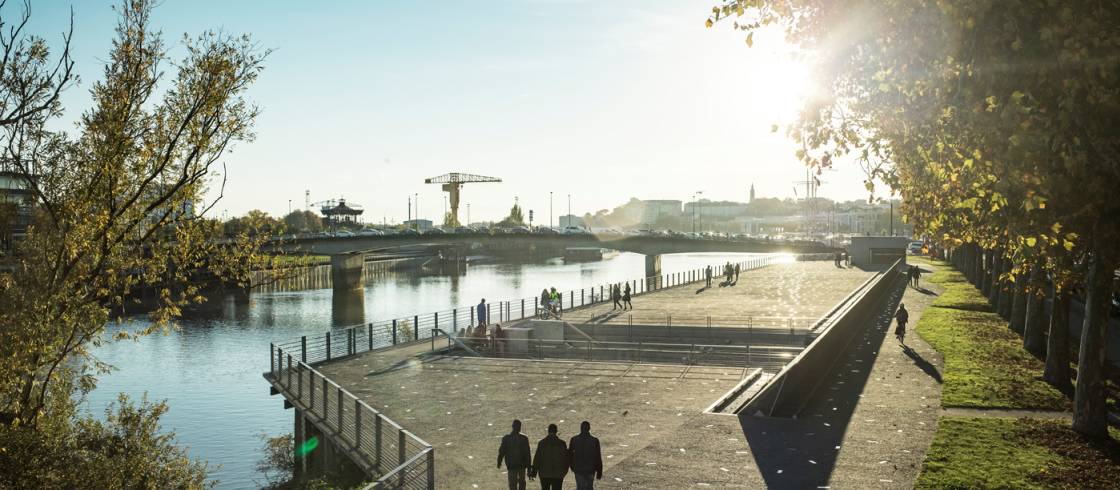The Unspeakable
"23rd of March, 1774... They threw themselves into the sea, 14 black women, all together, all at the same time, in a single motion -- what diligence they had, the waves were very large and rough, the winds blowing with torment."
"The sharks had already eaten many before it was possible to launch a boat so that we could only save seven of them of which one died."
Louis Mosnier, commander, The Sun slave ship

"There is always this moment when it clicks, a moment when they go down into the memorial, where there is this relationship between the silence, the water and the writings on slavery."
Johanna Rolland, mayor, Nantes, France
"When things are not spoken about, not expressed, when this history is hidden, when it's not brought up, it comes up again and often is used for ill."
Jean-March Ayrault, 2012 mayor of Nantes

The French port city of Nantes opened its Memorial to Abolition of Slavery in 2012. At the same time it altered the history of the museum to reflect the role that the city played in the slave trade. Now, other French port cities are on the way to taking similar steps to bring their histories in line with the unacknowledged past that has brought shame to them. Nantes, on the banks of the Loire River is where the city sees its students brought to the memorial in a teaching moment.

When they descend a staircase leading to the memorial students tend to fall silent with the immensity of the knowledge being passed to them. That their nation was the third largest European slave-trading nation following Portugal and England and was responsible for transporting between 1.3 to 1.4 million African captives to the French colonies of Guadeloupe, Haiti, Martinique, Louisiana and French Guiana, as slaves.
Like most cities of Europe, Nantes preferred not to acknowledge this history. Local organizations representing largely people from the Caribbean insisted that the city recognize this past. One recommendation was to "put in place something permanent, such as a plaque that would mark the end of slavery", according to Octave Cestor who began Memories From Overseas representing people from former French colonies.
 |
| The monument was designed by Polish designer Krzysztof Wodiczko and US architect Julian Bonder. |
When they faced the resulting refusal by authorities the group along with others themselves took the initiative to commission a statue of a slave breaking his chains, erected close by the port. Soon after its placement "the statue was desecrated, broken", in the words of Michel Cocotier now leading the group, a high school principal. Opponents had rewound the chains around the statue's ankles and broken off one of its arms.
The French "Code Noir", a document issued in 1685 in reflection of the relationship between master and slave where amputation was punishment for runaway slaves was obviously being referenced in the desecration of the monument. But it was that event that led to a popular backlash where support emerged to build a memorial reflecting the city's historical involvement in the slave trade.
 |
| france.fr |
Labels: France, Memorial, Slave Trade

<< Home